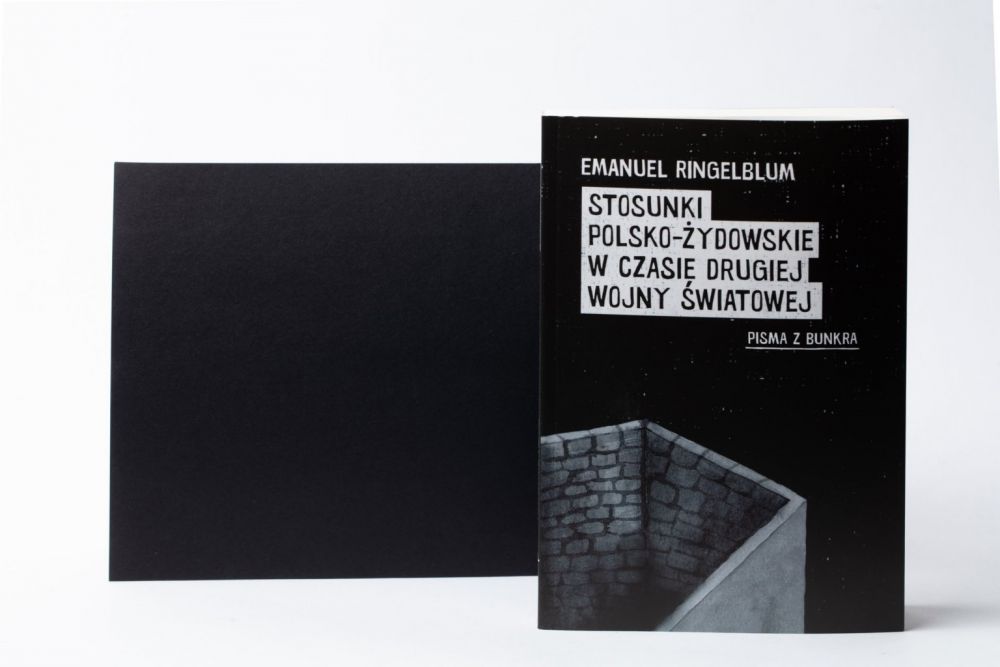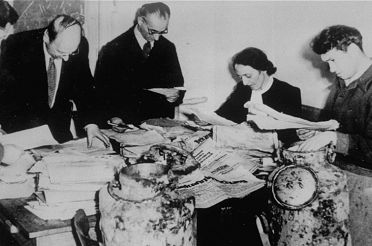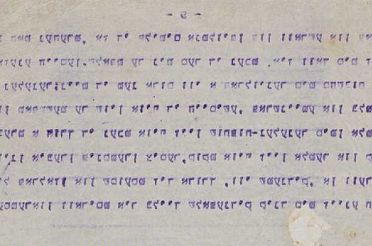Emanuel Ringelblum wrote a work on Polish-Jewish relations during World War II while hiding in the underground bunker “Krysia” in Warsaw’s Ochota district in autumn 1943. He handed the manuscript, written in Polish, to Adolf Berman, thanks to whom the document survived the war – in March 1944 Ringelblum, his family and all the bunker’s inhabitants were discovered and murdered by the Germans during an action against Jews hiding in Warsaw after the liquidation of the ghetto.
![Ringelblum_portret_poziom_zw.jpg [447.62 KB]](https://www.jhi.pl/storage/image/core_files/2022/3/14/98695d5abcae4bb61671e45c9b1aa298/jpg/jhi/preview/Ringelblum_portret_poziom_zw.jpg)
Ringelblum subtitled his essay Notes and Insights. He was aware that, despite the declaration of writing sine ira et studio, he was unable to distance himself from the tragedy and slaughter – as he called the genocide of Jews – still ongoing in occupied Poland. The author of the introduction and study, Professor Tadeusz Epsztein, writes that Ringelblum “realized that he did not have full knowledge and did not have many sources at his disposal. He considered the final and objective study of the problem possible after the end of the war.”
Ringelblum also did not have access to many documents, with the possible exception of copies of some of the works contained in the Archive buried in the ruins of the ghetto, which he created with his associates between mid-1940 and early 1943. The essay remains an important historical document.
In Polish-Jewish Relations… Ringelblum presents various aspects of the contacts between the two nations under the German occupation: from help, cooperation, saving the lives of Jews by Poles, to indifference, exploitation and betrayal. He describes life in the ghetto along with smuggling, relations with the “Aryan” side, passivity of Jews and the fight against the Germans. He writes about the reactions to the ghetto uprising and the hardships of hiding from blackmailers and Gestapo agents:
Most of the Jews on the Aryan side stay “below the surface.” They live in bunkers or simply in the last room of a flat. From a person who lived in such a last room for six months I heard how much skill it takes to prevent neighbors or friends from finding out that there is a Jew in the apartment. During someone’s visit, you have to maneuver in such a way, so move from the room to the kitchen and to other spaces, so that the guest can see the entire apartment and not see the Jewish family hidden there. I heard about a Jewish family who lived in a two-room apartment for 5 months, and there was no collision even once, despite frequent visits from relatives and friends of the hosts.
The publication was prepared on the basis of the critical edition: Archiwum Ringelbluma. Konspiracyjne Archiwum Getta Warszawy, vol. 29a: Pisma Emanuela Ringelbluma z bunkra, ed. Eleonora Bergman, Tadeusz Epsztein, Magdalena Siek, Warsaw 2018.
![OS_belka.jpg [57.58 KB]](https://www.jhi.pl/storage/image/core_files/2020/12/3/07eb16efe9ce52a851e48899a8f87e0f/jpg/jhi/preview/OS_belka.jpg)






![MKiDN_bialy_logotyp_strona_ŻIH_EN.png [10.32 KB]](https://www.jhi.pl/storage/image/core_files/2023/1/12/0fbb15388d1a5d89c65891b6ce66941c/png/jhi/preview/ZNAK%20ENG.png)